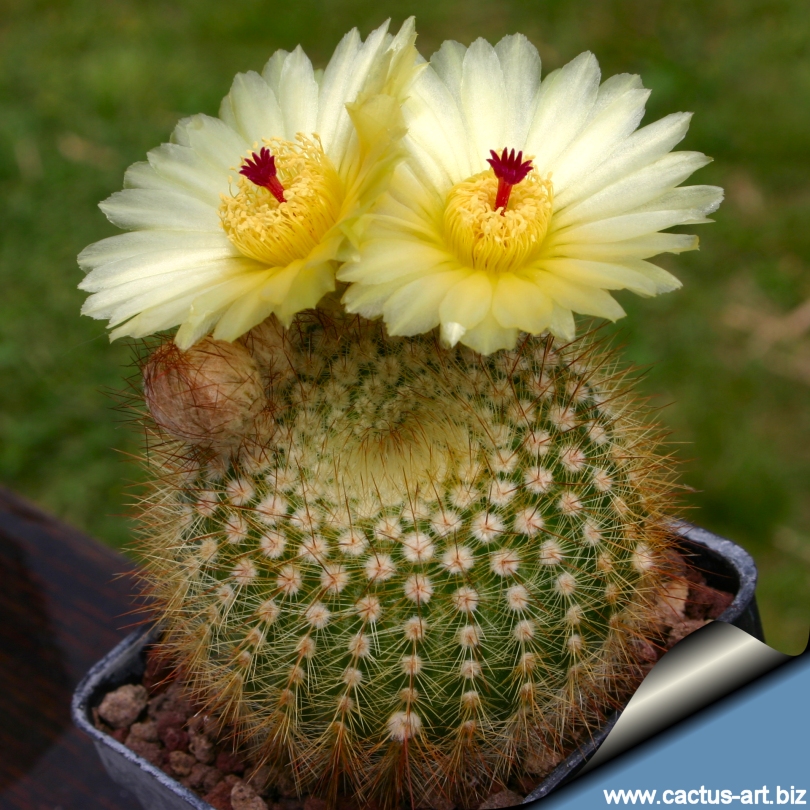|
|
|

Flowers open during the day and close at night.
Succineus
"amber coloured" and sulphureus
"yellow coloured" refers to the colour of the spination.
|
Morphology
(Identifying
Characteristics):
Habit:
Clumping short
cactus
Stem: At
first globular, becoming
shortly
columnar
up to 45 cm tall,
10 cm in diameter.
Spines: Dense
amber-yellow, the new spines are orangish.
Flower:
Diurnal,
opening in during the day and closing at night. Yellow with red pistil,
4cm in diameter.
|
|

|
 |
|
. |
 |
 |
|


Advertising
|
|
|
|
|
Family:
Cactaceae (Cactus
Family) Notocactus sulphureus
n.n.
Scientific Name:
Notocactus
scopa f. succineus
(F.Ritter 1970) N.Gerloff & Neduchal 2003
In: Gerloff, N. & Neduchal, J.
(2003): Internoto 24 (3/4): 59-60
Distribution:
Southern Brazil, Uruguay, northern Argentina
Conservation status:
Listed
in
CITES Appendix II
The Notocactus
scopa aggregate is an ensemble of related species comprising
N. scopa,
N. schlosseri, N. scopa var. xicoi, N. sucineus
NOTE: This
plant was
transferred to
Parodia in 1997 by David Hunt.
Synonyms:
- Parodia succinea
N.P.Taylor 1987
Parodia scopa ssp. succinea Hofacker & P.J. Braun 1998
- Peronocactus scopa ssp. succineus
(F.Ritter) Doweld 1999 nom. gen. inval.
- Notocactus (SG Scopacactus) scopa ssp.
succineus (F.Ritter) Doweld 2000
- Notocactus succineus var. sulphureus n.n.
- Notocactus scopa v sulphureus
- Notocactus sulphureus n.n.
|
|
|
|

Cultivation: It
is easy to grow. It
prefers a neutral to slightly acidic
mineral-based potting mix with plenty
of extra grit and feed during the summer. It likes a warm bright location, does great in partial shade but doesn't like
full, hot blazing sun in the central summer month.
Can support quite some water during the growing season
but pot plants in winter are
wet-sensitive and
needs to be kept
dry (rots easily if soil is wet and cold) tends to lose
its roots in winter. Water Best if watered with rain water.
Usually it is recommended to
over-winter
this plant in a bright and warm greenhouse with at least 8-10° C
and rather dry (it tends to lose its
roots and to rot if the substrate is wet and cold) but
it has proved to tolerate temperatures as low as -5° C for short
periods. It
is susceptible to spider mites, so it should be check once in a while
for it.
Propagation: Seeds,
cuttings or root suckers (if available). Not too difficult to raise from seed.
Photo of conspecific taxa, varieties, forms and
cultivars of plants belonging to the
Notocactus scopa
complex:
|
|